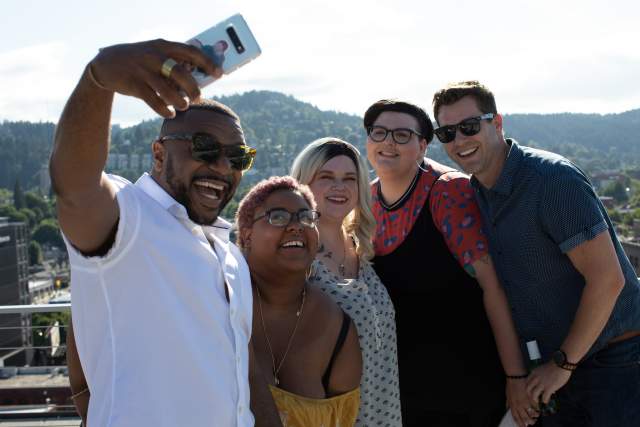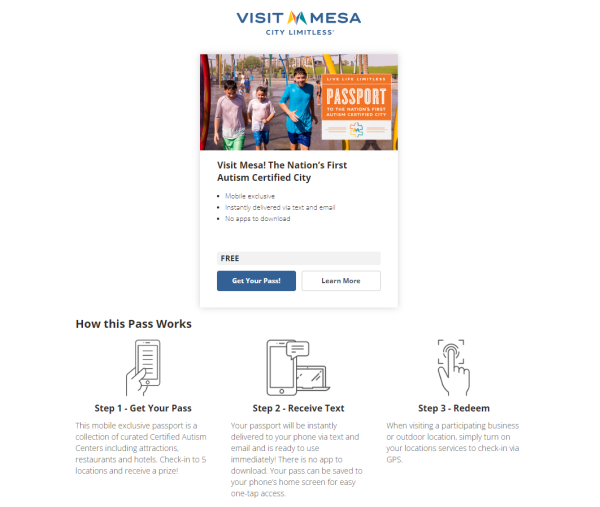“All for one and one for all,” a phrase that has been around for a long time, but how do we fit it into accessibility and travel? Making diversity, equity, and inclusion (DEI) a priority is more than just adding a few voices to your board and posting on social media for inclusive holidays.
Accessibility and inclusion should serve as foundational principles for all destination marketing organizations (DMOs), beginning with their missions and values, rather than being relegated to mere marketing strategies. Below we will speak to just a few of the measures your DMO can take to accommodate and be inclusive of all in your initiatives, everyday marketing, campaigns, and attraction development.
Having Pride in Mind
It’s not just about pride month and a rainbow-colored logo, LGBTQIA+ travelers are looking for a welcoming atmosphere, a place they can be themselves, and are taking current political matters into consideration when booking a destination visit. Changing your logo to the colors of the flag in support is not enough; take some of the following steps to truly make your destination and businesses a place where all can visit confidently:
- Partner with local, state, and national pride organizations, or even create your own
- Share honest and true information about safety, support, and travel
- Provide educational resources for your attractions, lodging, and business partners
Whether you are chasing leads for meetings, conventions, or sporting events, or are promoting your destination to visitors, make conscious decisions on how you position your DMO and your destination.
Check out Virginia Tourism Corporation and its LGBTQ+ travel page which includes a “VA State Pride Guide” and channels that share everything Visit Gay VA.
Digital Accessibility Online & Onsite
Travelers with physical impairments and disabilities are looking to book travel and get inspired just like everyone else, but often are hit with roadblocks by way of assistance and availability of access. This comes in all forms, including digital access to DMO websites and onsite challenges when a business is not ADA compliant. In some cases, the destination’s major events, attractions, and shopping areas are not easily accessible to those in need of wheelchair access, sensory accommodations, or service animals.
While AudioEye can help make your website accessible, it is imperative for your destination to factor in accessibility throughout the visitor experience. Check out Tourism Northern Ireland for example, who has created an inclusive experience on beaches.
Body & Mind
Often when accessibility is discussed, many think of very specific scenarios, but don’t forget that accessibility comes in many different forms. Many travelers to your destination may not seem impaired at all, but no one should be allowed to judge. From mental health awareness to body positivity, many examples can fall under this category. While this category is often underserved as the rest, it is also an area that is hard to define as an issue.
Someone with anxiety, post-traumatic stress disorder, is classified as overweight, is depressed, or has another body/mind impairment that may affect their travel, should still have the opportunity to feel confident and comfortable in their vacation and travel choices.
Visit Mesa, for example, has introduced travel planning for visitors with Autism, allowing them to be confident in traveling and experiencing the city while having their needs placed first. They have also recently created a mobile pass with Bandwango to help support the initiative.
Taking into account accessible travel for body composition and injury is one that some push off on ADA guidelines and often not at all. Accommodating is one thing, but treating all equally and providing the best possible travel experience is another. Even having a source for body and mind accommodations or placing limitations on any listings that have restrictions, will help a traveler plan for what they can and can’t do and consider things they can with caution if the environment could be an issue.
Safe-Space Travel
Staying up-to-date on current events, natural disasters, crime, and quality tourism is a must. Focusing a brand and campaign around supportive tourism will create a safer and more trusted place of travel.
Examples of this can be found in sustainable tourism, DEI initiatives, conscious planning, and being willing to address the large and sometimes uneasy topics in the room when creating a brand or messaging. Take your locals’ voices into consideration and always address concerns where possible. No one wants to travel to a destination and then be met with travel restrictions, opposite reactions, and even laws that may make their visit unpleasant.



